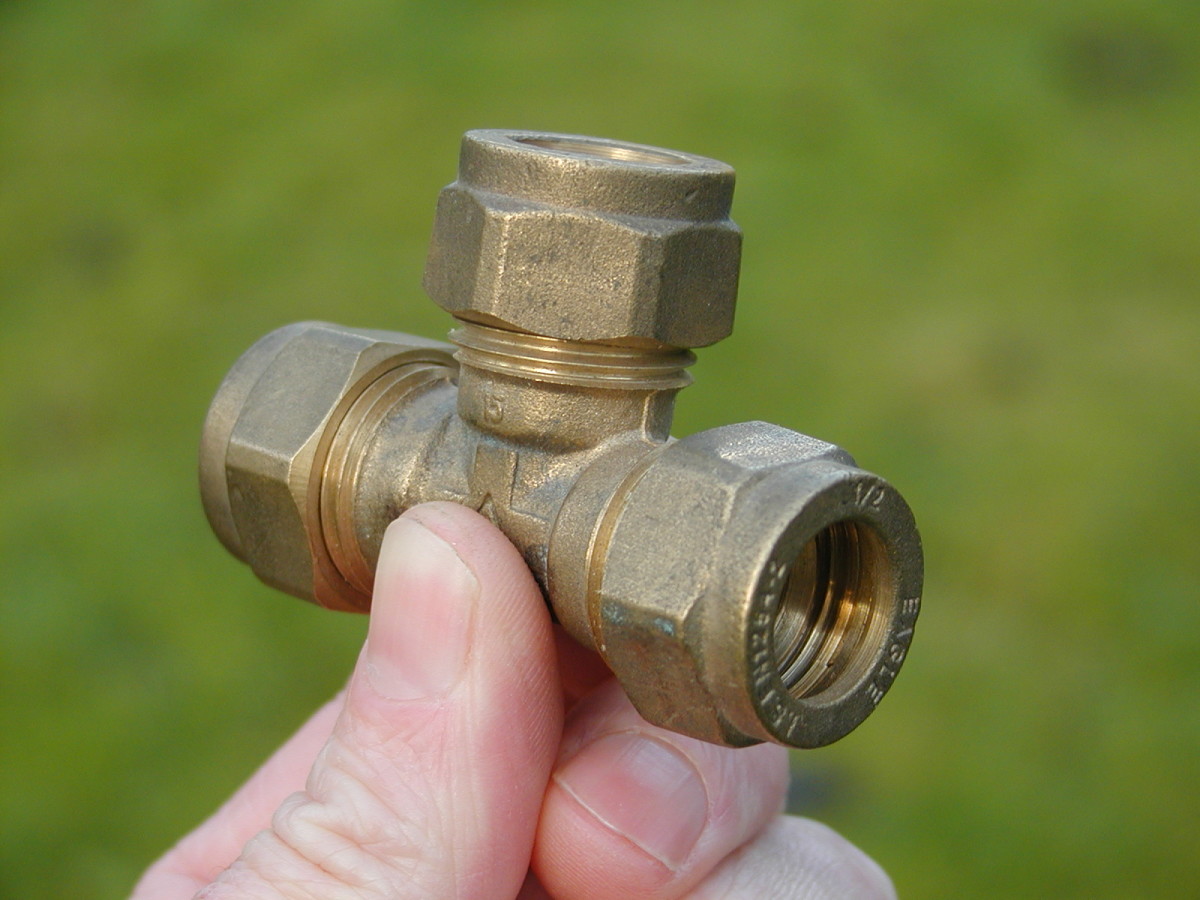On this page below you can get additional helpful facts relating to Why Do My Pipes Make Noises.

To detect noisy plumbing, it is very important to establish initial whether the unwanted noises take place on the system's inlet side-in various other words, when water is transformed on-or on the drain side. Noises on the inlet side have differed reasons: extreme water stress, worn valve as well as tap parts, incorrectly connected pumps or various other home appliances, improperly put pipeline fasteners, as well as plumbing runs having way too many tight bends or other constraints. Sounds on the drain side generally originate from inadequate place or, similar to some inlet side noise, a layout including tight bends.
Hissing
Hissing sound that occurs when a faucet is opened somewhat typically signals excessive water stress. Consult your local water company if you suspect this problem; it will have the ability to tell you the water stress in your location and also can mount a pressurereducing shutoff on the incoming water pipeline if required.
Other Inlet Side Noises
Squeaking, squeaking, scratching, breaking, as well as touching usually are caused by the expansion or contraction of pipes, generally copper ones supplying hot water. The audios occur as the pipelines slide against loose fasteners or strike close-by house framing. You can usually identify the place of the trouble if the pipes are revealed; simply comply with the noise when the pipes are making noise. Probably you will certainly discover a loose pipeline hanger or an area where pipes exist so near to flooring joists or various other mounting items that they clatter versus them. Attaching foam pipe insulation around the pipelines at the point of call ought to correct the issue. Be sure bands and wall mounts are secure and also give adequate assistance. Where possible, pipeline fasteners should be affixed to huge structural elements such as structure wall surfaces instead of to mounting; doing so reduces the transmission of resonances from plumbing to surfaces that can intensify and move them. If attaching bolts to framing is inevitable, cover pipes with insulation or other durable material where they contact fasteners, as well as sandwich completions of new fasteners between rubber washing machines when installing them.
Correcting plumbing runs that deal with flow-restricting tight or countless bends is a last resort that ought to be embarked on just after consulting an experienced plumbing specialist. Regrettably, this situation is relatively common in older houses that may not have been developed with interior plumbing or that have seen several remodels, specifically by amateurs.
Chattering or Shrilling
Extreme chattering or screeching that happens when a valve or faucet is turned on, and that typically vanishes when the installation is opened totally, signals loose or malfunctioning inner components. The option is to replace the valve or faucet with a brand-new one.
Pumps and also home appliances such as washing makers as well as dishwashing machines can move electric motor noise to pipes if they are improperly linked. Link such things to plumbing with plastic or rubber hoses-never rigid pipe-to isolate them.
Drainpipe Sound
On the drainpipe side of plumbing, the principal goals are to remove surfaces that can be struck by falling or rushing water as well as to protect pipes to include unavoidable sounds.
In brand-new construction, bathtubs, shower stalls, commodes, as well as wallmounted sinks and basins need to be set on or versus resilient underlayments to lower the transmission of audio through them. Water-saving commodes and taps are much less noisy than conventional versions; install them rather than older kinds even if codes in your area still permit utilizing older components.
Drainpipes that do not run up and down to the basement or that branch into straight pipe runs supported at floor joists or various other mounting existing specifically frustrating sound issues. Such pipelines are big enough to radiate considerable resonance; they additionally lug substantial quantities of water, that makes the scenario worse. In brand-new construction, specify cast-iron dirt pipelines (the huge pipes that drain pipes toilets) if you can manage them. Their massiveness consists of a lot of the noise made by water travelling through them. Additionally, stay clear of routing drainpipes in wall surfaces shown to bed rooms as well as areas where people gather. Walls consisting of drains need to be soundproofed as was explained previously, using dual panels of sound-insulating fiber board and wallboard. Pipes themselves can be covered with unique fiberglass insulation created the function; such pipelines have a resistant vinyl skin (sometimes including lead). Outcomes are not always acceptable.
Thudding
Thudding noise, usually accompanied by trembling pipelines, when a tap or device valve is turned off is a condition called water hammer. The noise and vibration are caused by the reverberating wave of stress in the water, which all of a sudden has no place to go. Occasionally opening up a valve that discharges water swiftly into an area of piping containing a restriction, elbow joint, or tee fitting can create the same condition.
Water hammer can typically be cured by mounting installations called air chambers or shock absorbers in the plumbing to which the problem shutoffs or faucets are linked. These gadgets enable the shock wave produced by the halted circulation of water to dissipate airborne they have, which (unlike water) is compressible.
Older plumbing systems might have brief vertical sections of capped pipeline behind walls on faucet runs for the same function; these can eventually full of water, reducing or destroying their efficiency. The treatment is to drain the water system totally by turning off the main supply of water shutoff as well as opening all faucets. After that open up the main supply valve as well as close the faucets one at a time, starting with the faucet nearest the shutoff and also ending with the one farthest away.
WHY IS MY PLUMBING MAKING SO MUCH NOISE?
This noise indeed sounds like someone is banging a hammer against your pipes! It happens when a faucet is opened, allowed to run for a bit, then quickly shut — causing the rushing water to slam against the shut-off valve.
To remedy this, you’ll need to check and refill your air chamber. Air chambers are filled with — you guessed it — air and help absorb the shock of moving water (that comes to a sudden stop). Over time, these chambers can fill with water, making them less effective.
You’ll want to turn off your home’s water supply, then open ALL faucets (from the bathroom sink to outdoor hose bib) to drain your pipes. Then, turn the water back on and hopefully the noise stops! If you’re still hearing the sound, give us a call to examine further.
Whistles
Whistling sounds can be frustrating, as sometimes the source isn’t easily identified. However, if you can pinpoint which faucet or valve that may be the cause, you’ll likely encounter a worn gasket or washer — an easy fix if you replace the worn parts!Whistling sounds from elsewhere can mean a number of things — from high water pressure to mineral deposits. Your best plan of attack here is to give our plumbing experts a call. We’ll be able to determine where the noise is coming from and what the cause may be, then recommend an effective fix!
Cracks or Ticks
Cracking or ticking typically comes from hot water going through cold, copper pipes. This causes the copper to expand resulting in a cracking or ticking sound. Once the pipes stop expanding, the noise should stop as well.
Pro tip: you may want to lower the temperature of your water heater to see if that helps lessen the sound, or wrapping the pipe in insulation can also help muffle the noise.
Bangs
Bangs typically come from water pressure that’s too high. To test for high water pressure, get a pressure gauge and attach it to your faucet. Water pressure should be no higher than 80 psi (pounds per square inch) and also no lower than 40 psi. If you find a number greater than 80 psi, then you’ve found your problem!
Next step is to give us a call in order to install a pressure regulator. Trust us, you don’t want to wait to resolve this issue. Not only is the sound annoying, but high water pressure can be destructive to your home — including damaging certain appliances, like your washer and dishwasher.
Dripping
You might be accustom to the slow quiet drip your kitchen faucet makes. You might have even tuned out your bathroom sink dripping and drabbing all day long — but it’s time to find its cause.
A slow drip could signify a variety of easy to fix issues, such as a worn out O ring, or loose part. And by ignoring the drip, you could be wasting up to 2,000 gallons of water a year! So start conserving water — get it looked at ASAP.
https://www.pwessig.com/blog/2018/december/why-is-my-plumbing-making-so-much-noise-/

We were guided to that editorial about Why Do My Plumbing Pipes Make A Knocking Noise through a friend on another website. Those who appreciated our article kindly do not forget to share it. Thanks a lot for your time. Kindly come by our site back soon.
Expertise? One call away.
 Daniel Stern Then & Now!
Daniel Stern Then & Now! Romeo Miller Then & Now!
Romeo Miller Then & Now! Sam Woods Then & Now!
Sam Woods Then & Now! Matilda Ledger Then & Now!
Matilda Ledger Then & Now! Lisa Whelchel Then & Now!
Lisa Whelchel Then & Now!